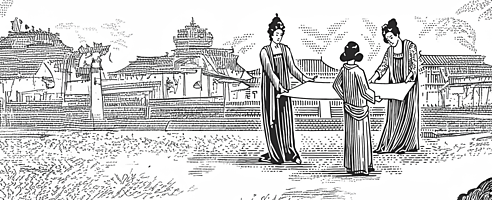Trade brought Chang’an extraordinary cultural and economic wealth and made it among the world’s most dazzling and cosmopolitan cities in its day.
“Trade brought Chang’an extraordinary cultural and economic wealth and made it among the world’s most dazzling and cosmopolitan cities in its day,” writes Chelsea Follet in this article about the Tang dynasty capital. In this lesson, you’ll learn how the Silk Road greatly expanded the international flow of goods and ideas and how Chang’an both benefited from and contributed to that exchange.

